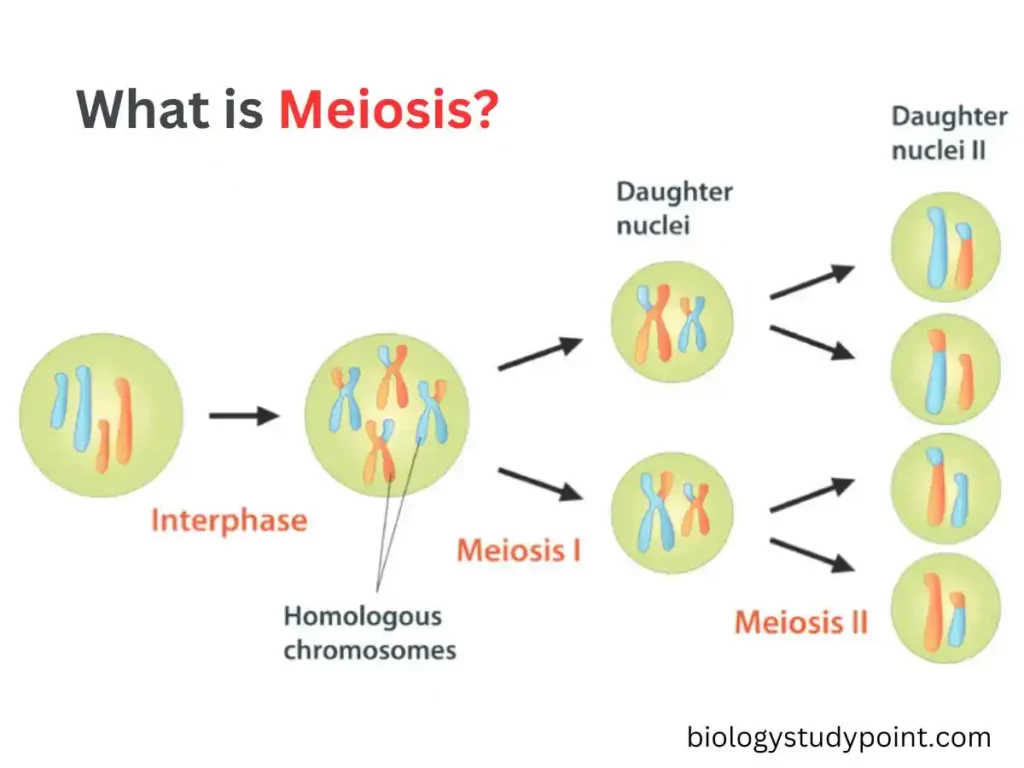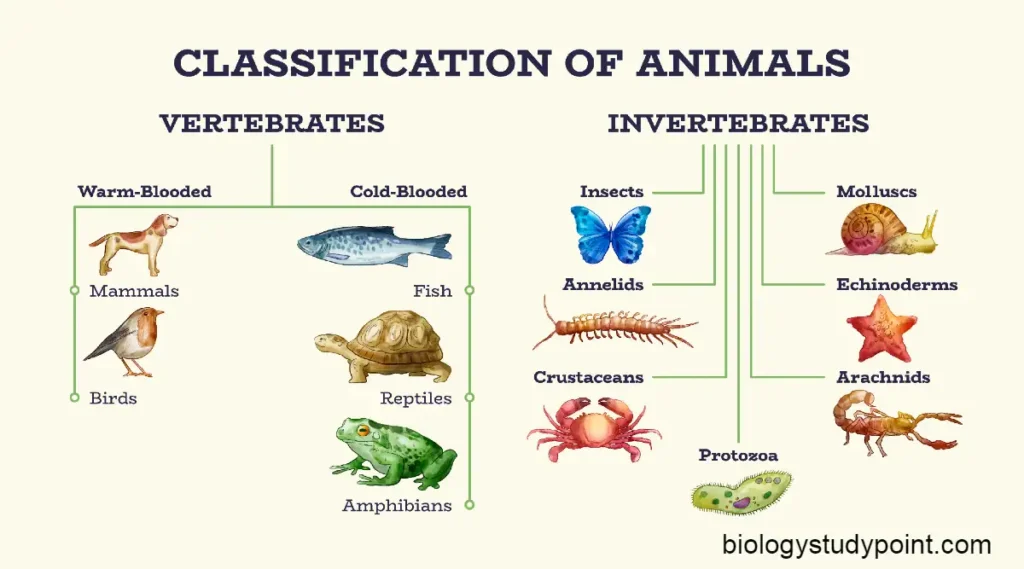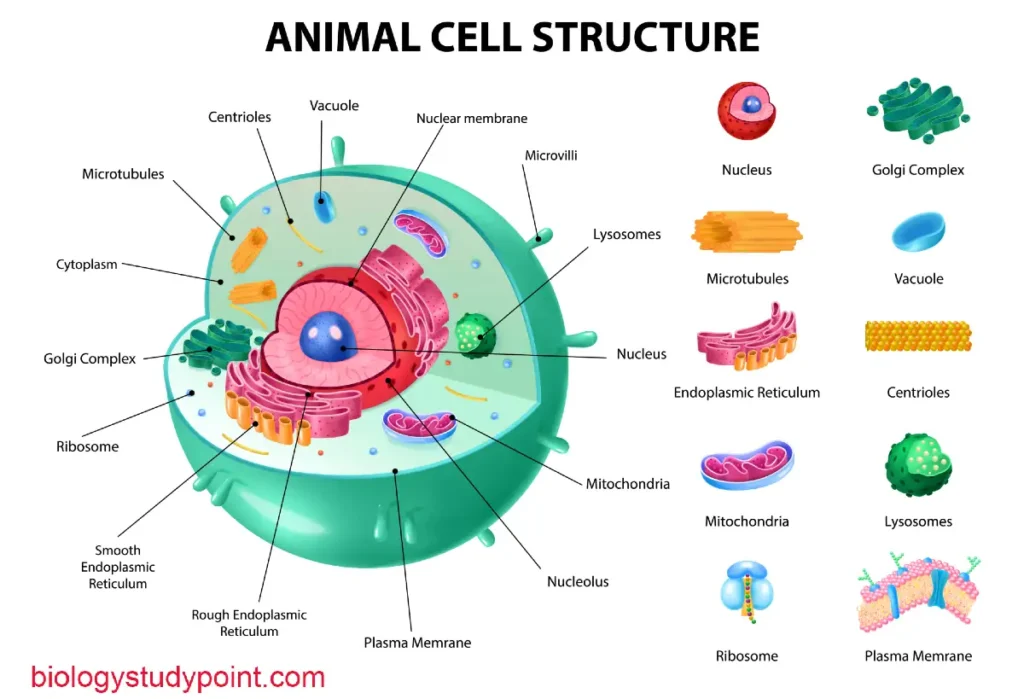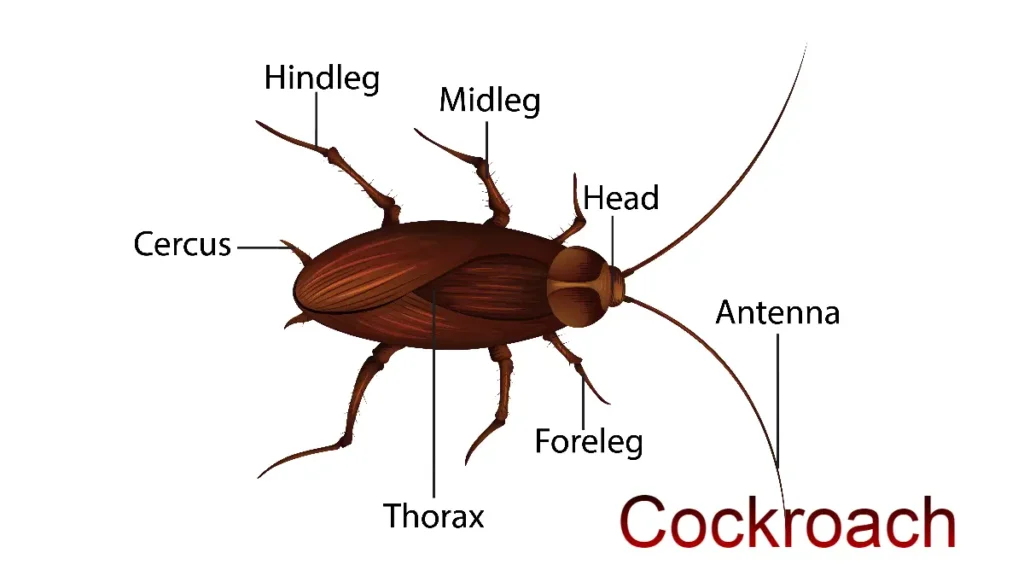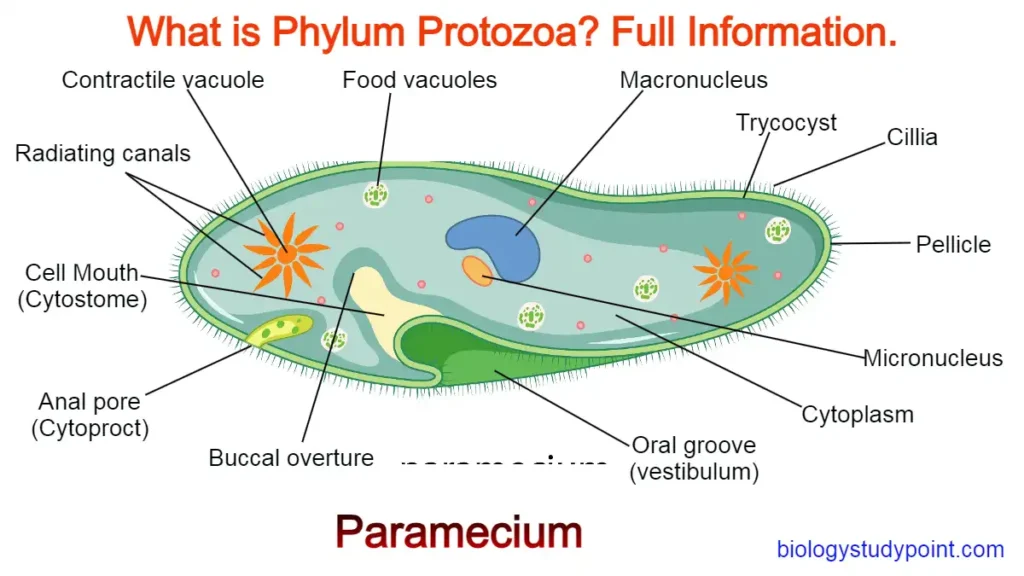Hello, guys, In today’s this article we will study about meiosis. Like – what is meiosis? What are the significance of meiosis, and meiotic division? We will know the answers to many such questions today, so let’s start.
What is meiosis?
Meiotic Division –
The reduction divisions occur only in the reproductive cells at the time of gamete formation. By this process, four daughter cells are formed from the single parental cell and the chromosome number in them (the daughter cells or gametes) is reduced to half (haploid).
The entire process of meiosis is separated into a sequence of steps similar to those of mitosis, but these stages are repeated twice.
Heterotypic Division (First Meiotic Division) or Reduction Division –
1. First prophase – The prophase of first division is longer and profoundly modified. It is divided into following fives stages–leptotenne, zygoene, pachytene, diplotene and diakinesis.
- Leptotene or leptonema stage – The leptotene stage initiates meiosis. The meiotic cell or meiotic is comparatively large and possesses a large nucleus. It has diploid chromosome complement. The chromosomes in the leptotene stage are thin and long threads and longitudinally single rather than double as in mitosis. Each chromosome presents a beaded appearance due to the presence of dense granules (called chromosomes) at regular interval along its entire length.
- Zygotene or zygonema stage – The zygotene commences with the movement of chromosomes brought about by the attraction between the chromosomes of each homologous pair. These approach each other and become intimately associated to form a bivalent. The pairing of homologous chromosomes is known as synapsis and is an exact, not a random process, for it starts at one or more points along the length of chromosomes and the chromomeres of one homologous synapse exactly with the corresponding one in the other. The nucleus now appears to have only the haploid number of chromosomes.
- Pachytene – The pachytene is the stable period in the cell division. During this stage, the paired chromosomes of each bivalent get shortened and thickened and are more readily distinguished. The homologous chromosomes twine around each other and each starts splitting into two sister chromatids by a vertical or longitudinal furrow, but the division is not obvious.
- Diplotene – The splitting of chromosomes and the separation of homologous chromosomes initiates diplotene. In the diplotene the bivalent consists of four chromatids. The synaptic forces of attraction between them lapse, and the homologous chromosomes uncoil and separate. The separation is, however, incomplete and the homologous are in contact at one or more points. These points of contact are known as chiasmata. Exchange of chromatid parts between the homologues occurs due to the breakage and rejoining of weaker chromatids at chiasmata. The phenomenon is known as crossing over and brings about the exchange of hereditary material. By the end of diplotene, chiasmata begin to move from centromere towards the end of tetravalent. This phenomenon is called terminalisation.
- Diakinesis – the diakinesis is characterized by the disappearance of nuclear membrane and nucleolus. The separation of bivalents is completed, and they become more thickened and contracted. As a result, the chiasmata reach the ends of chromosomes. Meanwhile, the formation of nuclear spindle also starts.
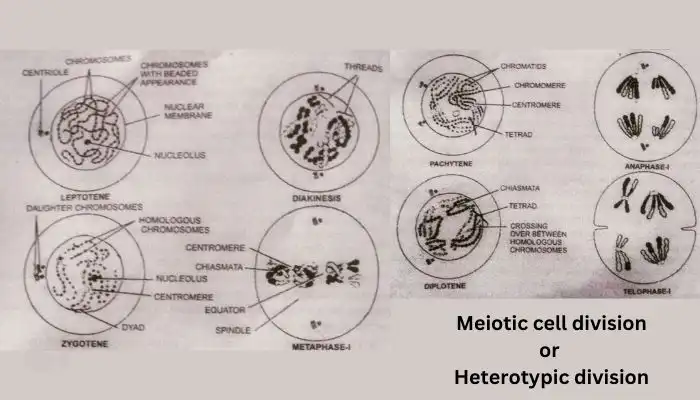
2. First metaphase – The movement of bivalents towards the equator of the spindle initiates metaphase. Ultimately the bivalents orient themselves on the equator in such a way that the centromeres lie one on either side equidistant from the equatorial plate.
3. First anaphase – In anaphase the chromatids are separated into pairs which move toward the opposite poles of the spindle. This results in the formation of two groups of haploid chromosomes on either pole. The separation of tetrads into dryads or a pair of chromatids is known as disjunction and involves the separation of chromosomes which were previously brought together during synapsis.
4. First telophase – The first telophase commences with the formation of a nuclear wall. The chromosomes uncoil and the cytoplasm of the cell divides into two by the formation of cell membrane. Thus, two daughter cells, each with haploid number of chromosomes, are formed from a parental cell.
5. Interphase – The interphase is the resting stage of a dividing cell, and its duration depends upon the species involved. It may be absent or of short or long duration. It is the interphase is absent, the chromosomes pass directly from the first telophase to second prophase without any change in appearance. If the interphase is present, the nuclear membrane is formed and the chromosomes uncoil so that two distinct nuclei are formed.
6. Second prophase – During this stage, the nuclear membrane in both the daughter cells disappears and the formation of spindle starts separately.
7. Second metaphase – The chromatids of each chromosome are connected only with the centrioles and lie parallel to one another. The dyads move towards the center and come to lie on the equator of the spindle.
8. Second anaphase – The chromatids separate to form sister chromosomes, which move apart towards the opposite poles of the spindle.
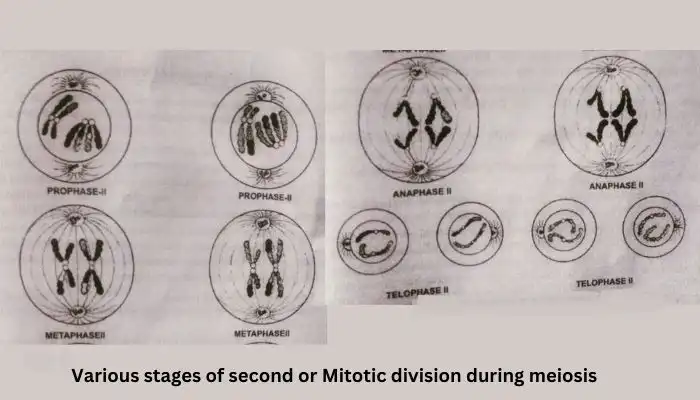
9. Second telophase – The chromosomes uncoil and form separate groups. Around each group, a nuclear membrane is formed. Thus, two nuclei are reorganized in each cell. The nuclear division is followed by the division of cytoplasm.
Thus, as a result of meiosis four daughter cells are formed, each with haploid number of chromosomes.
What is the significance of meiosis?
- Meiosis is a logical and necessary part in the life-cycle of sexually reproducing animals, as it helps to restore the definite number of chromosomes characteristic of that species.
- As a result of meiosis, the gametes are formed from the reproductive bodies. Each gamete possesses chromosomes just the half in number of somatic cells. The fusion of gametes at the time of fertilization results in their duplication. Thus, meiosis is the step that avoids multiplication of chromosome number in the somatic cells and helps in stability of species.
- During the process of meiosis, crossing over takes place between the chromosomes of homologous pairs, which are received one from each parent. The crossing over and chiasmata formation result in the exchange of chromosomes pieces between the two homologous.
Compare mitosis and meiosis.
- Mitosis takes place in somatic cells, whereas meiosis occurs in the reproductive cells.
- In mitosis the nucleus divides once, while in meiosis it divides twice, but the chromosome divides only once in both the divisions.
- In mitosis the number of chromosomes is the same in both the parent and daughter nucleus, but in meiosis the daughter nucleus contains a haploid number of chromosomes.
- Mitotic prophase is of comparatively very short duration than that of prophase of meiosis.
- Mitotic division is a homotypic division, but meiosis is of two types, heterotypic and homotypic.
- In the prophase of meiosis, chromosomes appear in single thread but in identical pairs, while in mitosis they appear in double threads.
- In mitosis, synapsis is absent, but it can in observed in meiosis.
- Chiasma and crossing over occur in meiosis, while absent in mitosis.
- At mitotic metaphase the centromere of each chromosome divides and the sister chromatids move towards opposite poles, but in meiosis the centromere does not divide, but the homologous chromosomes move towards the opposite poles.
- Mitosis results in the formation of two daughter cells, while in meiosis four daughter cells are formed.
Conclusion
So friends, in today’s article we have studied what is meiosis. Friends, if you like this article, then please comment, share and tell your suggestions and our mistakes.
Thank you so much











